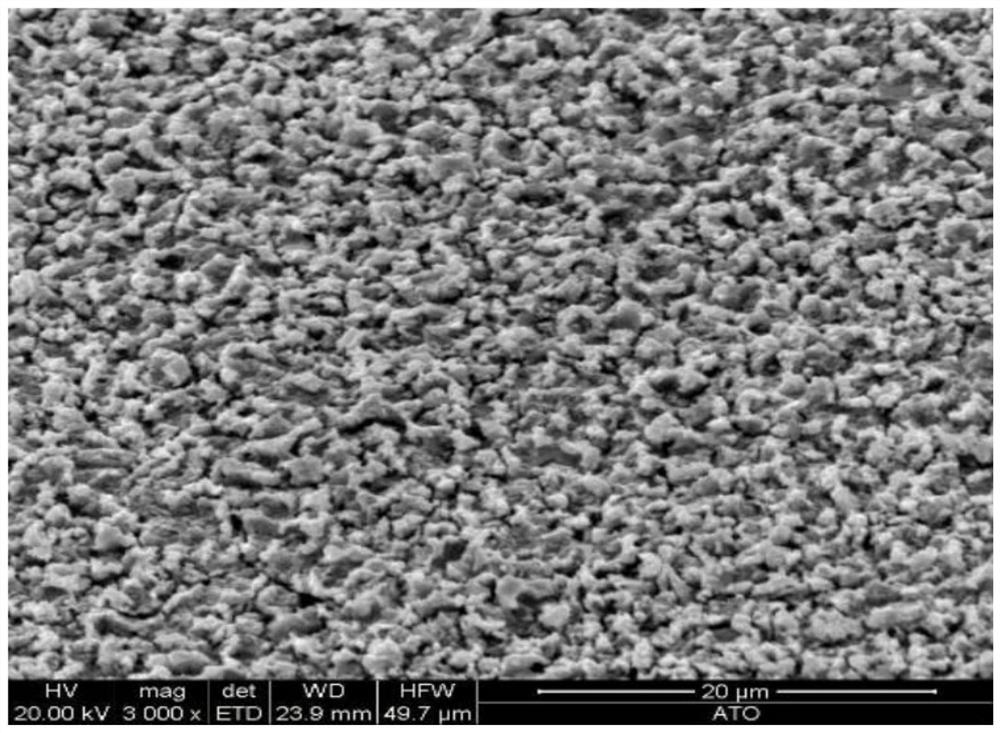Method for recovering brownification waste liquid
A recovery method and technology of browning liquid, applied in the direction of improving process efficiency, etc., can solve the problems of lack of effective components, unfavorable growth and reproduction of microorganisms, and high cost of oxidative degradation method.
- Summary
- Abstract
- Description
- Claims
- Application Information
AI Technical Summary
Problems solved by technology
Method used
Image
Examples
Embodiment 1
[0033] Before recycling, the content of the main components of the used browning waste liquid is determined. Through EDTA titration, the copper content in the browning waste liquid was measured to be 25g / L; through acid-base titration, the sulfuric acid concentration in the browning waste liquid was measured to be 1mol / L; the chemical oxygen demand measured by the dichromate method The content (COD) is 10000ppm, which means that browning waste liquid contains a lot of organic matter.
[0034] Add alkaline substances such as copper hydroxide or copper oxide to 1L browning waste liquid, adjust the pH to 0-2; stir and dissolve, and then pass SO into the solution 2 Gas, the solution began to be turbid and precipitated. After 1-2 hours of aeration reaction, a large amount of precipitates appeared in the solution. After stopping the aeration, filter to obtain the precipitate and the first filtrate.
[0035] The above-mentioned first filtrate is fully aerated for 1-2 hours to obtain...
Embodiment 2
[0039] The difference from Example 1 is: in the preparation step of the regenerated browning liquid, the quality of the additive sub-liquid is 15g, and the added sulfuric acid is 107mL (the concentration is 50%, and the density is 1.4g / cm 3 ), the added hydrogen peroxide is 17mL (concentration is 50%, density is 1.2g / cm 3 ); that is, the mass volume ratio of the additive sub-liquid accounting for the regenerated browning solution is 1.5%; the added sulfuric acid quality is 75g, and the added sulfuric acid accounts for 7.5% of the mass volume ratio of the regenerated browning solution; the added hydrogen peroxide The mass is 10g, and the mass volume ratio of the added hydrogen peroxide to the regenerated browning solution is 1%. The rest of the conditions are exactly the same as in Example 1, and will not be repeated here.
Embodiment 3
[0041] The difference from Example 1 is: in the preparation step of the regenerated browning liquid, the quality of the additive sub-liquid is 80g, and the added sulfuric acid is 214mL (the concentration is 50%, and the density is 1.4g / cm 3 ), the added hydrogen peroxide is 50mL (concentration is 50%, density is 1.2g / cm 3 ); That is, the mass volume ratio of the additive sub-liquid accounting for the regenerated browning solution is 8%; the added sulfuric acid quality is 150g, and the added sulfuric acid accounts for 15% of the mass volume ratio of the regenerated browning solution; the added hydrogen peroxide The mass is 30g, and the mass volume ratio of the added hydrogen peroxide to the regenerated browning solution is 3%. The rest of the conditions are exactly the same as in Example 1, and will not be repeated here.
PUM
| Property | Measurement | Unit |
|---|---|---|
| density | aaaaa | aaaaa |
Abstract
Description
Claims
Application Information
 Login to view more
Login to view more - R&D Engineer
- R&D Manager
- IP Professional
- Industry Leading Data Capabilities
- Powerful AI technology
- Patent DNA Extraction
Browse by: Latest US Patents, China's latest patents, Technical Efficacy Thesaurus, Application Domain, Technology Topic.
© 2024 PatSnap. All rights reserved.Legal|Privacy policy|Modern Slavery Act Transparency Statement|Sitemap


